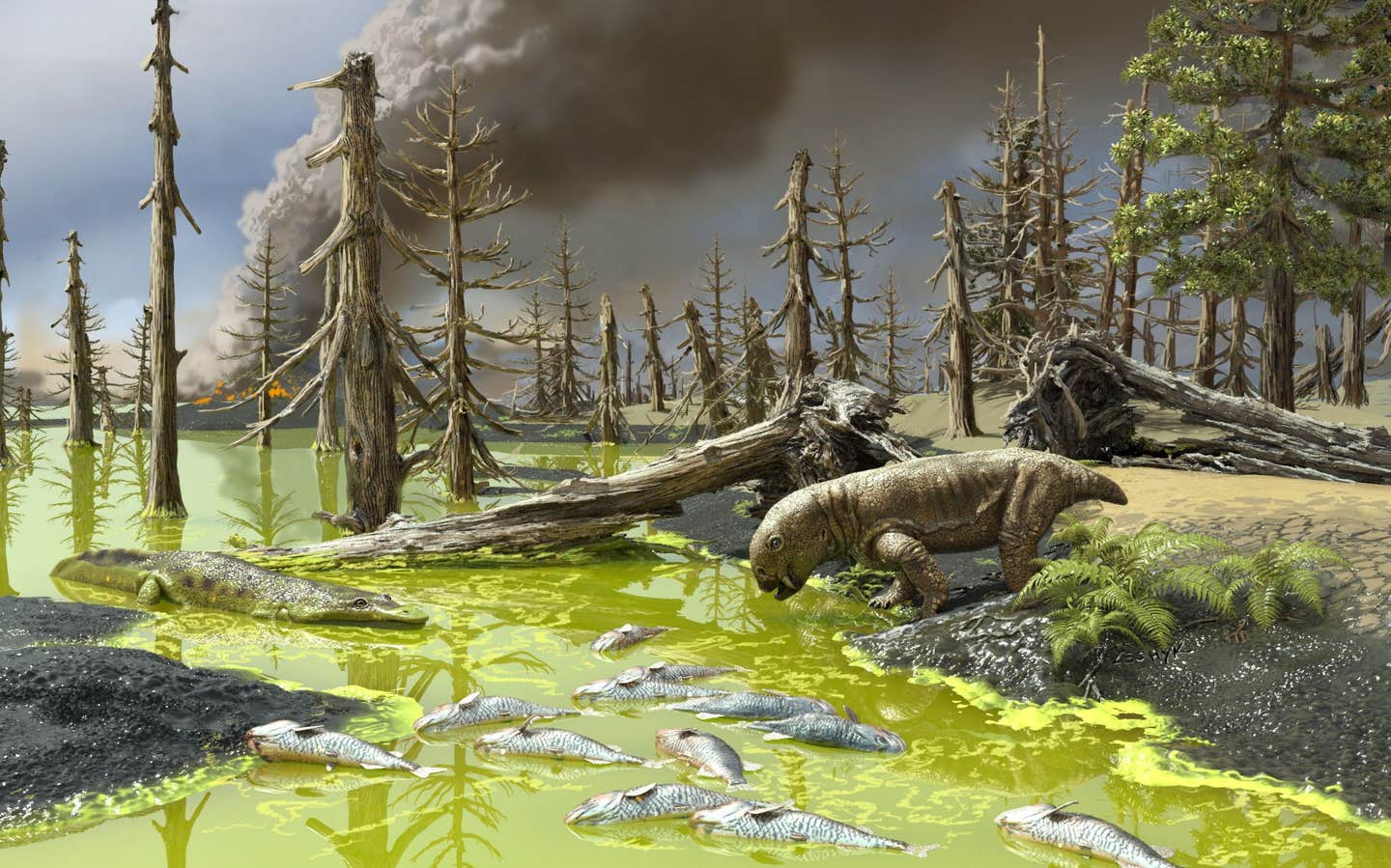New fossil discoveries reveal life before Earth’s greatest extinction
Fossils from Tanzania and Zambia reveal life before Earth’s largest extinction, offering fresh clues to ancient survival and loss.

New fossil discoveries from Tanzania and Zambia give scientists their clearest view yet of life before the planet’s most devastating extinction event. (CREDIT: Victor Leshyk / CC BY-SA 4.0
More than 250 million years ago, life on Earth faced its most devastating crisis — a global event so severe that it wiped out nearly three-quarters of life on land and an even larger share in the oceans. Now, after 15 years of painstaking fieldwork in southern Africa, scientists are bringing this ancient chapter of history into sharper focus.
A team led by the University of Washington and the Field Museum of Natural History has uncovered hundreds of remarkably preserved fossils from Tanzania and Zambia. These remains date back to the Permian period, which began about 299 million years ago and ended roughly 47 million years later with the so-called “Great Dying.”
By piecing together what creatures thrived in southern Pangea — the single massive landmass that dominated the globe — just before this extinction, the researchers are gaining valuable insight into the world that existed before the rise of dinosaurs.
Christian Sidor, a biology professor at the University of Washington and curator at the Burke Museum, has spent years trekking through the rugged Ruhuhu, Luangwa, and Mid-Zambezi basins in search of fossils. “This mass extinction was nothing short of a cataclysm for life on Earth, and changed the course of evolution,” he said. “But we lack a comprehensive view of which species survived, which didn’t, and why. The fossils we have collected in Tanzania and Zambia will give us a more global perspective on this unprecedented period in our planet’s natural history.”
Unearthing a Lost World
The project, which began in 2007, involved multiple month-long expeditions across southern Africa, often requiring researchers to walk miles between sites under a blazing sun. Field camps ranged from village guesthouses to open-air sites where the team once awoke to the thunderous footsteps of a passing elephant herd.
Related Stories
- New evidence reveals massive earthquake linked to dinosaur extinction
- What drove North America’s large mammals to extinction after the last ice age
Every fossil they collected will be returned to the countries of origin once research is complete, in accordance with agreements made with Tanzanian and Zambian authorities. Many finds were unearthed directly during these trips, while others came from older museum collections that had been sitting unstudied for decades.
The Permian period marked the end of the Paleozoic Era — an age when animal life made the leap from water to land and diversified into complex ecosystems. In southern Pangea, forests, wetlands, and arid plains were home to amphibians, reptile-like herbivores, and fearsome predators. The Great Dying, whose exact cause is still debated, destroyed most of these communities and cleared the way for the Mesozoic Era, which saw the emergence of dinosaurs, mammals, and flowering plants.
Fossils That Tell a Wider Story
For decades, the best fossil record of this period came from South Africa’s Karoo Basin. However, paleontologists realized as early as the 1930s that the rock layers in Tanzania and Zambia offered a similarly pristine record of life before and after the extinction. The new finds provide an unprecedented opportunity to compare different regions of ancient Pangea in detail.
“We can now compare two different geographic regions of Pangea and see what was going on both before and after the end-Permian mass extinction,” Sidor explained. “We can really start to ask questions about who survived and who didn’t.”
The team’s work, published in a special 14-paper series in the Journal of Vertebrate Paleontology, describes several newly identified species. These include plant-eating dicynodonts — squat, tusked, burrowing creatures with beak-like snouts — and saber-toothed gorgonopsians, apex predators of their time.
They also uncovered a massive salamander-like amphibian known as a temnospondyl. Each discovery adds a new piece to the puzzle of how ecosystems functioned before the extinction reshaped the planet’s biodiversity.
Filling Gaps in the Timeline
Sidor and his colleagues have already published a major analysis of the post-extinction animals from the Ruhuhu and Luangwa basins. This latest research looks further back, capturing the final chapters of the Permian before disaster struck.
The number and quality of specimens collected from Zambia and Tanzania are so exceptional that scientists can now make detailed, species-level comparisons with fossils from South Africa. This kind of precision allows paleontologists to test new ideas about how life responded to massive environmental stress.
“These parts of Zambia and Tanzania contain absolutely beautiful fossils from the Permian,” said Sidor. “They are giving us an unprecedented view of life on land leading up to the mass extinction.”
Past Studies and Findings
Research into the Permian period has long been anchored by fossils from South Africa’s Karoo Basin, which offers a near-continuous record of life before and after the Great Dying. Early fieldwork in Tanzania and Zambia, beginning in the 1930s, hinted that these regions held equally rich deposits. Over the decades, scientists occasionally visited the basins, but large-scale, coordinated projects were rare.
In 2018, Sidor, Angielczyk, and their collaborators published a sweeping analysis of animals that lived in the aftermath of the mass extinction. This study revealed how species composition shifted dramatically, with survivors adapting to fill ecological roles left vacant by the disaster. These earlier works provided the foundation for the current research, which focuses on life before the extinction event.
Practical Implications of the Research
By building a clearer picture of what life looked like before the largest extinction in Earth’s history, scientists can better understand the patterns that shape survival and recovery after global environmental crises. This knowledge can help researchers identify warning signs in today’s ecosystems, many of which are facing climate-driven stress.
The work also strengthens scientific partnerships with Tanzania and Zambia, ensuring fossil heritage is studied responsibly and returned for future generations. Beyond academic circles, these discoveries have the power to inspire public interest in paleontology and deepen our understanding of the resilience — and vulnerability — of life on Earth.
Note: The article above provided above by The Brighter Side of News.
Like these kind of feel good stories? Get The Brighter Side of News' newsletter.



